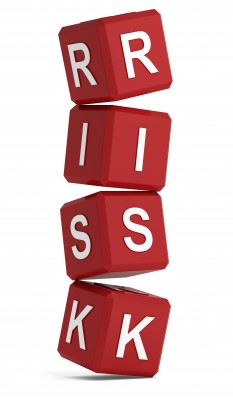
Click on the arrow to learn the 7 reasons to
be wary of Equity-Indexed Universal Life.
Then click here to request a FREE Analysis that will
show you how the life insurance product that has
more guarantees than any other can help you
reach your financial goals!

Click on the arrow to learn the 7 reasons to be wary of Equity-Indexed Universal Life.
Then click here to request a FREE Analysis that will show you how the life insurance product that has more guarantees than any other can help you reach your financial goals!
What if I told you there was a relatively new life insurance product that lets you share in a portion of the gains of the stock market in those years it goes up, but protects you from losses when the market goes down? Sounds pretty enticing, doesn’t it?
And what if I sweetened the deal by telling you that even in those years when the market tanks, you’ll still get a guaranteed increase of 1%, 2%, or even 3%?
You’d probably say…
Wow! Where do I sign up?”
Well, hold on a minute.
I’ve just described one of the most over-hyped life insurance products around today: Indexed Universal Life, or IUL, also known as Equity Indexed Universal Life. Watch the video to the right or download a transcript of the 7 Reasons to Be Wary of IUL.
An Indexed Universal Life insurance policy is essentially an annually renewing term insurance policy with a cash account on the side. Now term insurance policies get more expensive as you get older, until ultimately they become so costly that most people are forced to drop them. In an EIUL policy, the term insurance automatically renews every year at a higher rate. Wow. That can’t be good.
UPDATE: New York State’s top financial watchdog launched an investigation into the sales practices used by insurance companies and advisors who promote IUL policies, expressing concern that the illustrations are “wildly inaccurate” and that many people could be harmed.
UPDATE, FALL 2015: State insurance regulators adopted a new guideline for marketing material used by insurers and agents, that limit the investment gain that can be used to illustrate a policy’s performance. We expect more regulations to follow to prevent consumers from being harmed.
Seven Reasons To Be Wary…
The reality is that Equity Indexed Universal Life insurance policies are ticking time bombs for many reasons. Here are seven reasons to be wary—reasons that advisors who push these policies often neglect to point out:
1. Be careful of the illustrated values
When it comes to predicting how well a policy might perform, EIUL policy projections make some assumptions that are remarkably optimistic and misleading. First, their interest rate predictions are based on the past performance of various stock market indexes—often focusing on a recent twenty- to thirty- year period.
Remember that the last thirty years included the longest bull market in history. How likely do you think it is that that performance will repeat itself? And are you willing to bet your life savings on it?
Agents who sell these policies will tell you the policies have a proven track record. But they’ve only been around for 15 years! So, because they don’t really have a lengthy track record, they’ll tell you that EIUL policies have been “back-tested” to “increase accuracy.”
So what does “back-tested” actually mean?
Investopedia defines back-testing as a simulation based on past data. It then states, “The results are highly dependent on the movements of the tested period. Back testing assumes that what happened in the past will happen again in the future, and this assumption can cause potential risks for the strategy. As you’ll frequently hear…
Past performance does not necessarily guarantee future performance”
Second, illustrations for Indexed Universal Life insurance policies are further skewed by projecting a given average annual rate of return and then predicting that you’ll get that same return every year—for the life of the policy! How likely do you think it is that the market indexes will increase by the exact same percentage every single year, for 50 years or more? That’s simply not gonna happen.
In addition, a policy holder’s actual results can vary widely from what’s shown on the illustration—by as much as 100% or more! It depends on which indexing method is being used.
Agents will typically show you interest crediting rates of 8% or more each year.
 Do you really think that just because they’re showing you an illustration with a projected return of 8% every year that you’ll actually earn 8% in any year, let alone every year?
Do you really think that just because they’re showing you an illustration with a projected return of 8% every year that you’ll actually earn 8% in any year, let alone every year?
The agent will tell you that you’ll get a portion of the market’s increase in any given year. But he may not tell you that the company can change how much of the market’s increase you’ll be allowed to share in, at its discretion.
While a promoter of Indexed Universal Life insurance policies can dangle pie-in-the-sky numbers in front of you and tell you, “These are the returns I bet we can get for you,” in contrast, Bank On Yourself-type dividend-paying whole life policy projections must—by law—predict future growth at a rate that is no higher than the current dividend scale.
Furthermore, your cash value in a dividend-paying whole life policy is guaranteed to increase by a larger dollar amount each year that the premium is paid.
To find out what your bottom-line guaranteed results would be with a super-charged dividend-paying whole life policy (no other policy comes with as many guarantees), request a FREE, no-obligation Analysis here.
2. EIUL is a ticking time bomb because of costs
The costs for insurance and administrative charges are deducted from an EIUL policy’s values every month. These costs can include insurance charges, policy charges, transaction charges, policy issue charges, premium charges, and costs for additional riders. This is different from a whole life policy, where all costs have already been deducted from both your guaranteed and projected results.

All insurance policies have costs that the policy owner pays. But an EIUL insurance contract states that when those costs go up for the company, they can pass them on to you, the policy owner, up to some maximum limit. Bank On Yourself-type policies can never pass more costs on to you.
EIUL agents will often show you projections based on the current charges, not the maximum charges you could end up paying. Some people call this low balling.
On one EIUL illustration we saw recently, the insurance company credited a very generous 3% annual guarantee, and the illustration assumed that the charges would be the maximum allowed. What happened? The illustration showed that the cash value of that policy was guaranteed to go to zero in the 15th year! Heck, I can make my money disappear today, just by handing my wallet over to my 14-year-old niece at the mall. Why wait 15 years?
But what if the assumptions were a little less drastic? What if middle-of-the-road variables were used instead—say, an annual interest credit of 5.72% per year, and middle-of-the-road costs every year? That forecast came out better: It would take 20 years for the policy to have zero cash value!
True, if you consistently pay EIUL premiums at the highest allowable premium level, your costs probably will not increase dramatically. But you still won’t have any idea what your cash values will be!
Get instant access to the FREE 18-page Special Report that reveals how super-charged dividend paying whole life insurance lets you bypass Wall Street, fire your banker, and take control of your financial future.
3. Be wary of the guarantees on EIUL policies.
Some policies offer an interest rate guarantee of 1%, 2%, or even 3% per year, to offset years where the market goes down or is flat. And the illustrations reflect that. However, most policies do not actually credit the guaranteed interest to your policy every year. They may do it only every five to ten years or, very commonly, only when the policy is terminated. So the illustration is pure fiction.
Meanwhile, all the costs are still coming out every single month, which means your policy will lose value in years the market goes down or sideways! And it may even lose value in the years when the market goes up by just a little. You then need even higher future returns to make up for that negative return. Did your EIUL agent warn you about that?
It’s entirely possible that you could pay premiums every year and end up with NO cash value and NO death benefit, if the stock market indexes used don’t perform as projected.
Another EIUL policy illustration we’ve seen clearly states, “Based on policy guarantees, the cash values are zero at age 100.” Of course, that disclosure is in very small print. But can you imagine paying premiums for decades and having zero cash value?
That is so different from a Bank On Yourself-type policy. With a Bank On Yourself whole life policy, everything except the dividend is known, guaranteed and determined in advance. Your cash value is guaranteed to equal your death benefit when the policy matures.
4. Look out for Equity Indexed Universal Life insurance policies’ death benefit
The death benefit of an EIUL policy, like the premium, is flexible. The death benefit is not guaranteed—unless you have a no-lapse guarantee. If you have that guarantee, it simply means you’ll have a death benefit. But it doesn’t guarantee you’ll have any cash value, if the index performance is poor, or if costs go up, or both. And with no cash value to fall back on, you’ll have to continue to pay premiums out of your pocket to keep the death benefit in force. Agents promoting this product don’t usually mention that, either.
If you miss or delay making premium payments or loan repayments, that can reduce how long your death benefit guarantee stays in effect. And it can even void the guarantee altogether.
And think about this: In an EIUL policy, there’s no option to turn the policy into one which is fully paid up, with no more premiums due. This means that, depending on many factors outside your control, you may have to continue paying premiums out of your pocket for the rest of your life to keep the policy in force.
The premium for a Bank On Yourself policy is guaranteed never to increase. And the policy has a specified year, after which no more premiums are due. And you always have the option of taking the policy paid up with no more premiums due, any time after the seventh year.
5. Risk is the fifth reason to be wary of EIUL

Indexed Universal Life insurance policies shift all the burden and risk of managing the policy from the insurance company to you, the policy owner. The insurance company gets its money, but you don’t necessarily get yours. You might very well find yourself having to pay skyrocketing premiums, just to keep the policy from lapsing—or risk losing everything you’ve paid into the policy over the years.
Compare that with a Bank On Yourself whole life policy, where your costs, premium, cash value, and death benefit are all guaranteed and predetermined.
So, why would anyone even consider buying an Indexed Universal Life insurance policy? Because you’ve been told that the return might exceed the return of a whole life insurance policy.
Do you really need another hope-and-pray strategy in your financial plan?
Are you ready to have the peace of mind of knowing at least a chunk of your nest-egg is in a plan that goes in only one direction…
And has never had a losing year in over 160 years? You can know the guaranteed value of your Bank On Yourself plan at any point in time before you decide to move forward. To find out what your numbers would be, request your FREE Analysis, if you haven’t already.

6. Don’t overlook EIUL policy loan risk
Agents trying to sell you one of these policies like to tout a loan feature available in some policies that might allow you to make money by taking a policy loan.
For example, the illustration may show a 6% loan interest rate, and an 8% annual return. That sounds pretty good. It means that—in theory, anyhow—you could have a 2% gain on the amount you borrowed. So why not just get yourself one of those policies, borrow every dime you can at 6%, and earn 8% on the same money?
There’s just one problem with that. In most EIUL policies, every year there’s no gain in the stock market index, there’s little or no credit to your policy. Meanwhile, the costs are continuing to be taken out. And now you have a recipe for disaster.
Since one of the most popular and valuable features of the Bank On Yourself method is the process of using your cash values to finance things, can you see why using an EIUL policy for this purpose can be so dangerous to your wealth? Go to BankOnYourself.com/consumer-guide, to learn how Bank On Yourself whole life insurance policy loans work. You’ll discover that Bank On Yourself policy loans have none of these downsides.
7. Be aware of the EIUL lawsuits

Why would anyone want to buy a policy that has as many pitfalls as Equity Indexed Universal Life? I suspect it’s because we all want to believe there’s a “magic pill” answer to the volatility of the stock market. And until you dig deep, EIUL appears to have it all. But there are no magic pills, and isn’t it time for all of us to stop the endless, fruitless search for them?
The EIUL lawsuits have already begun. One lawsuit claims that, “any policyholder who purchases one of these policies is in a precarious situation,” and that the slick EIUL marketing brochures, “conceal material risks that the policies will not perform as illustrated, but will, instead, lapse… by projecting non-guaranteed values based only on index-crediting scenarios that assume essentially constant rates of return… although [the company] knows the rates of return will be highly variable.”
The lawsuit argues that, “the guaranteed values used in the illustration are misrepresented as annual guarantees, when in fact they are calculated upon policy termination on the basis of average annual guarantees.” The lawsuit also asserts that, “the costs significantly diminish the accumulation of value in the policies, regardless of whether the projected gains are realized.”
So, for these seven reasons, when it comes to EIUL, buyer beware!
Recommended Alternative: Bank On Yourself
Bank On Yourself-type whole life insurance plans come with more guarantees than any other life insurance product, and they have stood the test of time, not just for 15 years, or 50 years, but for more than 160 years.
Whole life insurance is the only form of life insurance recommended for the Bank On Yourself concept. (Learn about the different types of life insurance from our No-Nonsense Life Insurance Guide so you can make the right decisions for your family.)
With a Bank On Yourself-type policy, if the market is flat or down in some years, your cash value and death benefit won’t go down, and market fluctuations will not put your policy at risk if you’re taking policy loans to become your own source of financing.
Who takes all the risks with an EIUL policy? You do. With a whole life insurance policy, who takes all the risks? The insurance company does. And the companies recommended by the Bank On Yourself Professionals have under-promised and over-delivered results for more than a century.
With a Bank On Yourself-type whole life insurance policy…
- Your premium is fixed and can never increase.
- Your costs are guaranteed, and the company cannot increase them for any reason.
- Your cash value is guaranteed to grow each and every year.
- And your death benefit is also guaranteed.
At Bank On Yourself, we know there’s no reason whatsoever for you to have to take unnecessary risks with your money. If you want a financial future based on guarantees, rather than hope and prayers and keeping your fingers crossed, you’ll want to talk with a Bank On Yourself Professional to find out what your bottom line guaranteed numbers and results would be.
Request a free, no-obligation analysis and receive a referral to an Professional who is specially trained in designing the supercharged dividend-paying whole life insurance policies Bank On Yourself relies on.



